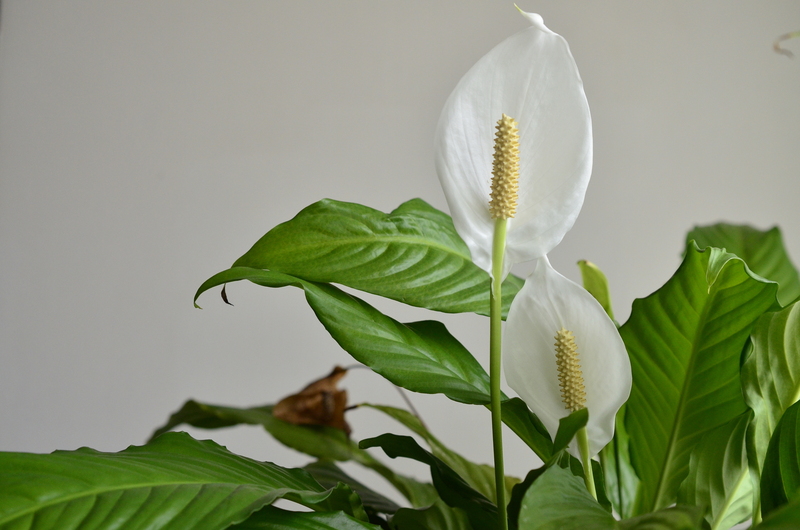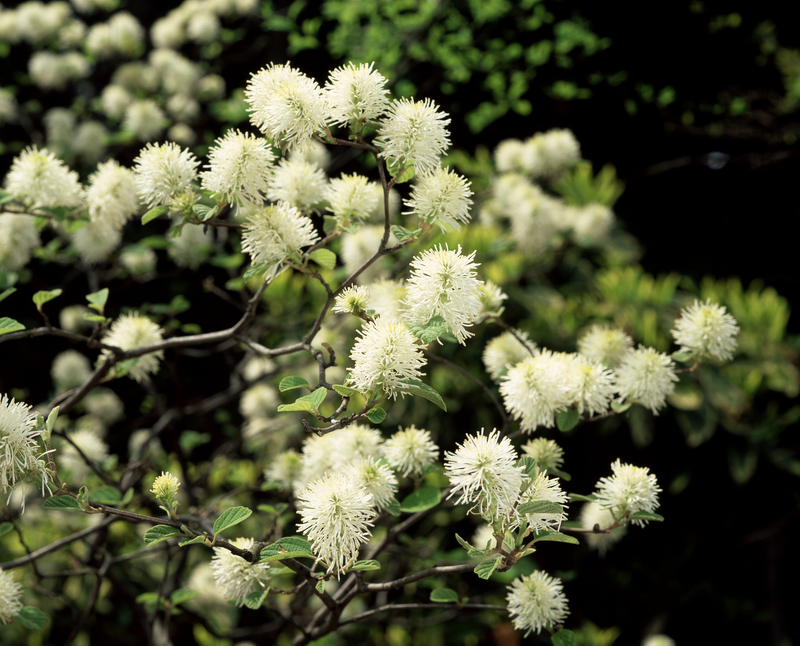Winterproof Your Garden Plants Effectively
Posted on 17/06/2025
Winterproof Your Garden Plants Effectively: A Comprehensive Guide
As the days grow shorter and temperatures plummet, seasoned gardeners know it's time to safeguard their beloved garden plants from winter's icy grip. Winterproofing your garden plants effectively is not just about tossing a little mulch on the ground; it's an art and science that, when done right, can ensure a lush, thriving garden come spring. This article will walk you through the best methods to winterproof your plants, offering expert tips, detailed step-by-step guides, and actionable insights for every type of gardener.
Why Is Winterproofing Essential for Your Garden Plants?
Understanding the threats winter poses to outdoor plants is the first step in preventing damage. Freezing temperatures, frost, wind chill, and even fluctuating moisture levels can wreak havoc on both outdoor and container garden plants. By learning how to winterproof your garden plants effectively, you can:
- Protect delicate species from frost and snow damage
- Preserve perennials, shrubs, and bulbs for healthy regrowth
- Reduce the risk of diseases and pests that thrive in winter's wake
- Minimize replacement costs and seasonal disappointment

Step-by-Step Guide: How to Winterproof Your Garden Plants
1. Assess Which Plants Need Protection
Before you begin, identify your garden's most vulnerable plants. Generally, plants that require winterproofing include:
- Tender perennials and annuals (e.g., dahlias, geraniums)
- Young trees and shrubs with sensitive bark
- Potted and container plants which experience root exposure
- Tropical and subtropical species outside their hardiness zones
Label these plants to prioritize your winter garden protection efforts.
2. Prepare Your Garden Ahead of the First Frost
Timing is crucial when winterizing your garden. Aim to start your winterproofing routine in late autumn, before the first hard frost arrives. This allows plants to enter dormancy naturally.
- Remove spent annuals and diseased foliage
- Continue watering until ground freezes to hydrate root systems
- Cut back perennials to minimize pest and disease harborage
3. Mulch: Your Garden's Winter Blanket
Carefully applied mulch is one of the best strategies for winter plant protection. A few tips:
- Apply a 2-4 inch thick layer around vulnerable plants
- Use organic mulches like shredded leaves, straw, or pine needles
- Avoid piling mulch directly against stems to prevent rot
- Mulch after the ground has begun to cool but isn't yet frozen
4. Insulate and Shelter Sensitive Plants
Many popular ornamentals, such as roses and hydrangeas, need extra insulation. Here's how to keep them snug:
- Wrap shrubs with burlap or horticultural fleece, securing the material with twine
- For smaller plants, use overturned buckets, frost cloths, or commercial plant covers
- Cluster potted plants together in a sheltered spot and wrap their containers for root insulation
5. Water Wisely
It may seem counterintuitive, but moisture is just as important in winter as it is in summer. Learn how proper watering practices can help:
- Water thoroughly before the ground freezes to ensure roots are hydrated
- Reduce watering during winter to prevent root rot
- For container plants, check soil moisture regularly since pots dry out faster
6. Shield Trees and Shrubs from Frost Cracks & Sunscald
Young trees, especially those with smooth bark like maples and fruit trees, are vulnerable to frost cracks and sunscald. Protect them by:
- Wrapping trunks with commercial tree wrap from base to lower branches
- Removing wraps in early spring to discourage pests and fungal growth
- Using stakes to support new trees against wind damage
Winterproof Strategies for Specific Garden Types
Winterproofing Perennials and Flower Beds
Most established perennials are hardy, but benefit from:
- Mulching after the first frost to stabilize soil temperatures
- Dividing and replanting overcrowded clumps before winter sets in
- Covering marginal species with evergreen boughs for added insulation
How to Protect Container & Potted Plants
Container gardens are at particular risk because their soil can freeze solid, endangering roots. Try these tactics:
- Move pots to a sheltered location: garage, shed, or against a south-facing wall
- Elevate containers off the ground with pot feet or bricks to promote drainage
- Wrap pots with bubble wrap or burlap for added insulation
- Group pots close together to minimize heat loss
Overwintering Bulbs
Some bulbs, such as tulips and daffodils, can survive outdoors, but tender bulbs like dahlias, gladiolus, and caladiums need to overwinter indoors:
- Dig up bulbs after the first frost has killed foliage
- Allow to dry, then store in peat moss, vermiculite, or sawdust in a cool, dry location
- Plant hardy bulbs deeper to winterproof garden bulbs against temperature swings
Caring for Vegetable Gardens in Winter
Protect your edible bounty by:
- Clearing spent crops and weeds to reduce pest habitat
- Covering soil with **cover crops** or organic mulch to retain nutrients
- Harvesting root crops like carrots and beets before hard freeze, or mulching heavily if you want to store them in the ground
Common Winterproofing Mistakes to Avoid
Even experienced gardeners make errors when trying to winterproof their garden. Avoid these common missteps:
- Applying mulch too early: This can trap heat, confusing plants and encouraging new growth too soon.
- Overwatering in late fall: Wet soil is prone to freezing and root rot.
- Covering plants completely: Smothered plants are susceptible to fungal diseases. Always allow for air circulation.
- Neglecting container plants: These are often most at-risk, yet easily overlooked.
Expert Tips to Effectively Winterproof Your Garden
- Use windbreaks made from snow fencing or evergreens to shield tender plants from cold winds.
- Install frost cloth or floating row covers for delicate crops and ornamentals on especially cold nights.
- Monitor moisture levels on warm winter days and water if soil gets too dry.
- Consider anti-desiccant sprays for broadleaf evergreens prone to winter burn.
- Keep plant tags and identification labels for reference in early spring care.
FAQs on Winterproofing Garden Plants
When should I start winterproofing my garden plants?
Start winterproofing once your area has consistent night-time temperatures below 50?F (10?C), but before the first hard frost. This is typically in late autumn.
Can all plants survive winter outdoors?
No. Only plants rated for your USDA Hardiness Zone can reliably survive outdoors in winter. Consult plant tags and local garden centers for advice on overwintering techniques for tender species.
What is the best mulch for winterproofing?
Organic mulches such as shredded leaves, straw, pine needles, or bark chips are ideal for insulating beds and borders during winter.
Should I fertilize my plants before winter?
Avoid fertilizing late in the season, as this can promote tender new growth vulnerable to cold. Focus on soil health and proper mulching instead.

Preparing for Spring: What Comes After Winterproofing?
Come spring, it's crucial to reverse your winterproofing efforts in a timely manner:
- Remove insulation materials once risk of hard frost has passed
- Prune away any winter-damaged stems or branches
- Begin regular watering as new growth appears
- Feed with a balanced, slow-release fertilizer to promote healthy regrowth
Conclusion: A Lush Garden Awaits with Proper Winterproofing
Winterproofing your garden plants doesn't have to be complicated or expensive, but it does require careful timing, attention to your garden's unique needs, and the right tools and materials. By following these expert winter protection strategies for garden plants, you can insulate against the harshest weather, prevent winter dieback, and position your garden for a flourishing comeback come spring.
Whether your focus is on protecting delicate perennials, hardening shrubs, or preserving container plants, employing these winterproofing techniques will ensure your landscape survives and thrives year after year. Start preparing now, and your garden will reward you with abundant color and life long after the snow melts.
Ready to winterproof your outdoor garden plants this year? Share your experiences and favorite tips in the comments!


